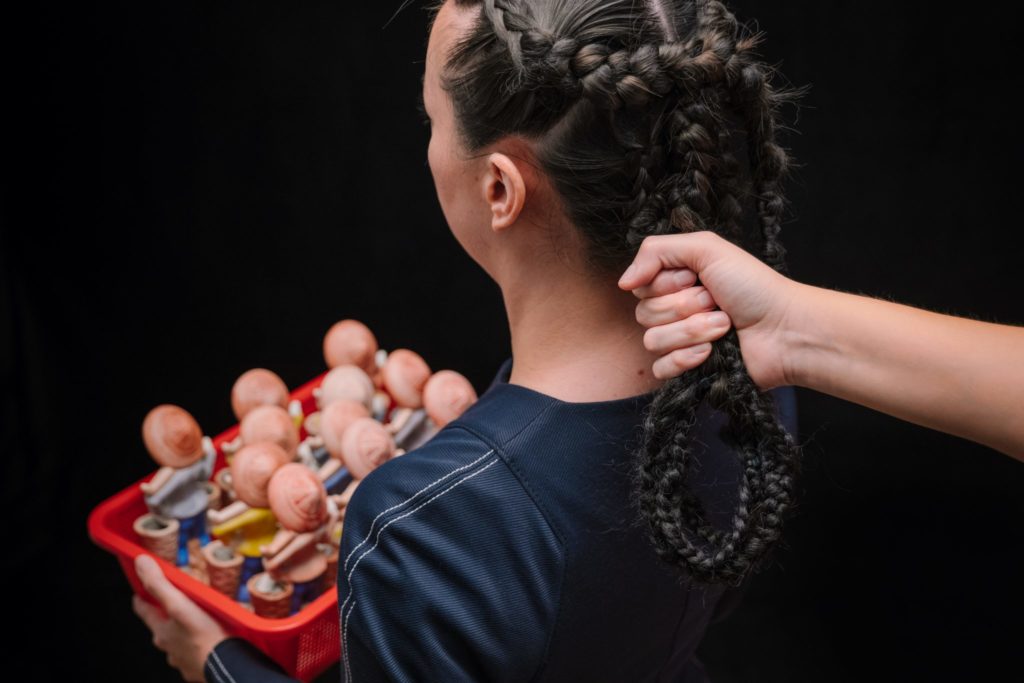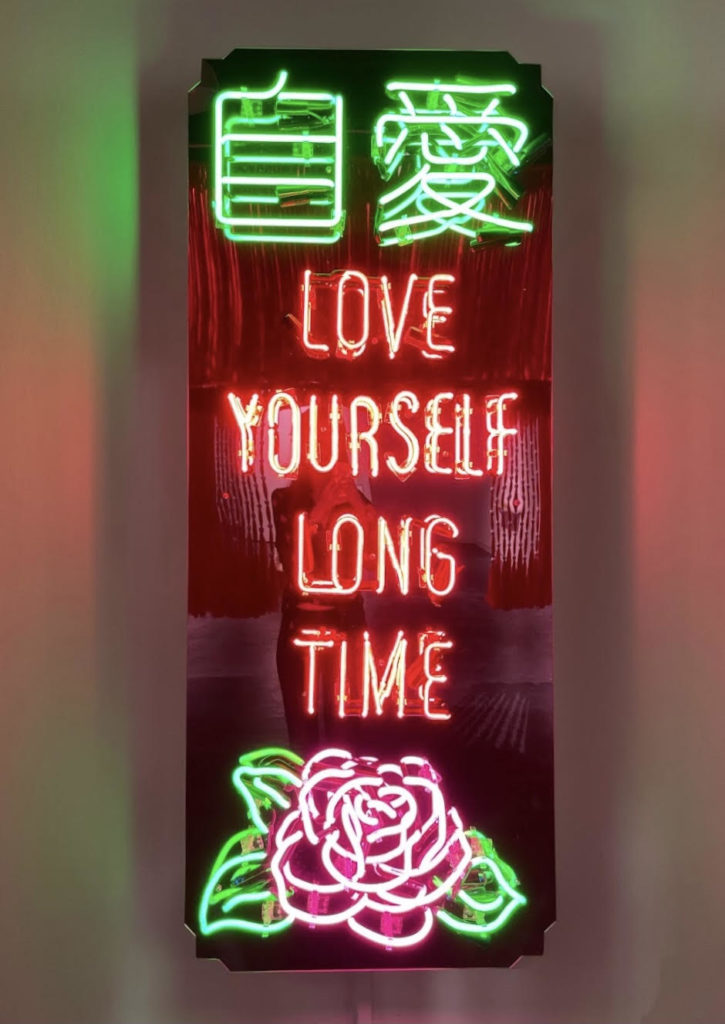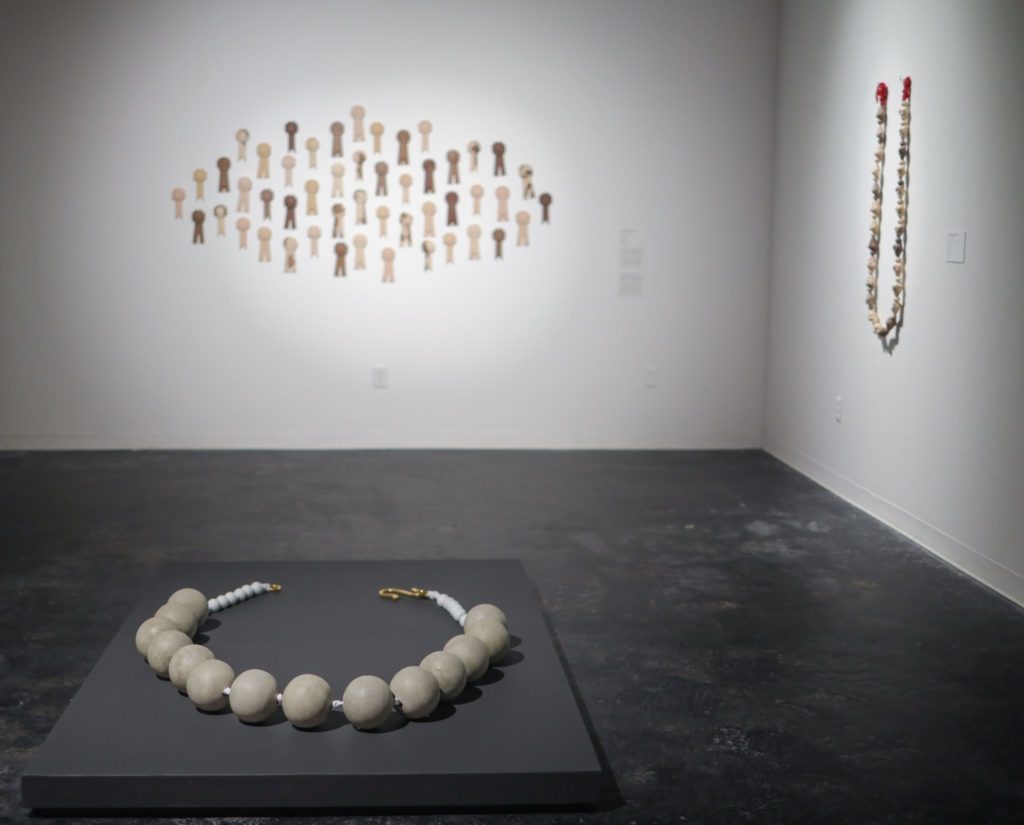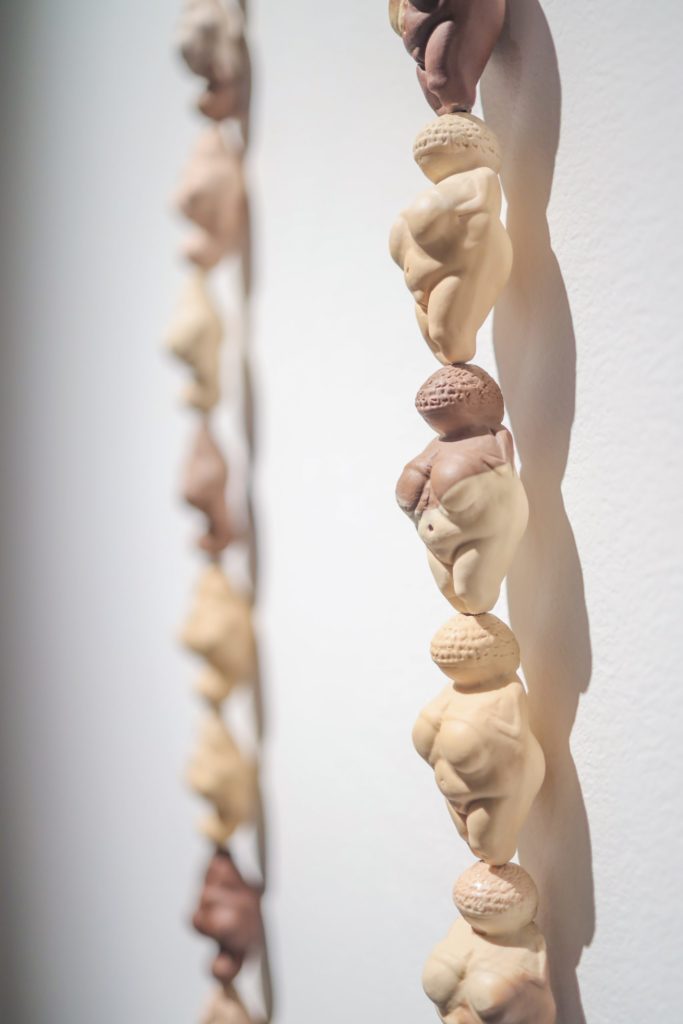Jennifer Ling Datchuk’s exhibition is filled with the haunting, rhythmic sounds of gently clattering porcelain.

HOUSTON — While conducting research at the Shanghai Propaganda Poster Art Center in 2018, Jennifer Ling Datchuk came upon a poster that caught her attention. “Chinese Carry Out Family Planning for the Revolution” by the Shanghai People’s Publishing House features a smiling, smocked woman who holds a bottle of birth control pills and is surrounded by cartoons of a woman and a child engaging in lively activities. The slogan below reads, “Later, Longer, Fewer,” encouraging women to have later marriages, longer periods between births, and fewer children. The 1974 poster is a precursor to China’s one-child policy that was instituted five years later to slow the country’s climbing birth rates.
As empowering as the poster’s message may seem, it also draws certain parallels with the most recent restrictions on women’s reproductive rights in Texas, where Datchuk has lived and worked for the past 13 years. In response to the poster, Datchuk wrote, “This message suggests that women have the power and access to resources in order to make these decisions in the first place.” Now as then, from Shanghai to San Antonio, women’s bodies are subject to state control.

Later, Longer, Fewer: The Work of Jennifer Ling Datchuk at the Houston Center for Contemporary Craft takes its title from the propaganda poster, but also takes up its apparent aim to empower women through their own bodies. In the exhibition, Datchuk’s thoughtful multimedia sculptures, large-scale installations, and performance videos operate in the tense spaces between high and low decorative arts, found and made objects, and Asian and Western histories. Created between 2012 and 2021 — with the majority being made this year — the artist’s works move nimbly through a variety of everyday materials including rope, clay, cement, and human and synthetic hair. Datchuk’s intelligent and approachable perspective is especially resonant in our political and social moment, which continues its fraught fixation on controlling women’s bodies.
The exhibition space is filled with the haunting, rhythmic sounds of gently clattering porcelain. The video “Tame” (2021) shows the artist holding a basket of porcelain “China girl” figurines, her hair braided into the shape of a horse bridle. Each time that Datchuk’s hair is pulled by someone off screen, the figurines in her basket rattle. Soft as it may be, the sound takes on the urgency of a ticking time bomb as the delicate porcelain figures threaten to finally shatter, and as the artist’s neck and head jerk backwards time and time again. Hair-pulling is something that many young girls have experienced, and in adulthood, it has connotations of sexual dominance. But it also refers to the larger forces that try to ‘tame’ us, ‘break’ us, or hold us back.
The body is implied in many of the works on display here, but it is only in the video that the physical body — in the form of the artist herself — appears. “As someone who can be seen as racially ambiguous because I’m not the Asian they know or see represented, it was important for my body to represent one and all,” Datchuk told Hyperallergic in a recent email.

“Silent Sisterhood” (2021) is a body-sized necklace made up of slip cast beads in the shape of the Venus of Willendorf. The piece is made from porcelain produced by Laguna Clay, which is often used for the skin of porcelain dolls. The names of the company’s colors — “NS-127 Asian” and “NS-128 Native American,” for example — condense groups of people into a single hue. Again, there’s a link to girlhood: so many young women look for signs of themselves in their childhood dolls. But with the fertility figures, Datchuk suggests that women share an ancient, powerful unity despite the odds.
Another oversized necklace lays on a low plinth nearby. “Heavy” (2021) resembles an enormous string of pearls, but its softball-sized cement beads and rope also remind us of bondage. “We are taught as women that we have choices and opportunities,” Datchuk said, “but have so many societal, cultural, and political systems that continue to hold us back.” Whoever might attempt to wear this piece would likely be unable to move. The fact that a simple act of adornment could be crippling reminds us of the many times that women are blamed for their marginalization, abuse, and even murders because of what they wear.
Many of Datchuk’s other works — a pile of doormats, a large curtain made of hair, a staircase covered in handmade candle sticks, a larger-that-life-sized ladder made of braided hair and beads — imply the crossing of a threshold. That threshold might be in time, space, or awareness. For the artist, the latter is especially important. “I believe the personal is political and while one piece of art might not change the world, I believe art can be a call to action,” she affirms.



Later, Longer, Fewer: The Work of Jennifer Ling Datchuk continues at the Houston Center for Contemporary Craft (4848 Main Street, Houston) through January 8, 2022. The exhibition was curated by Kathryn Hall.

